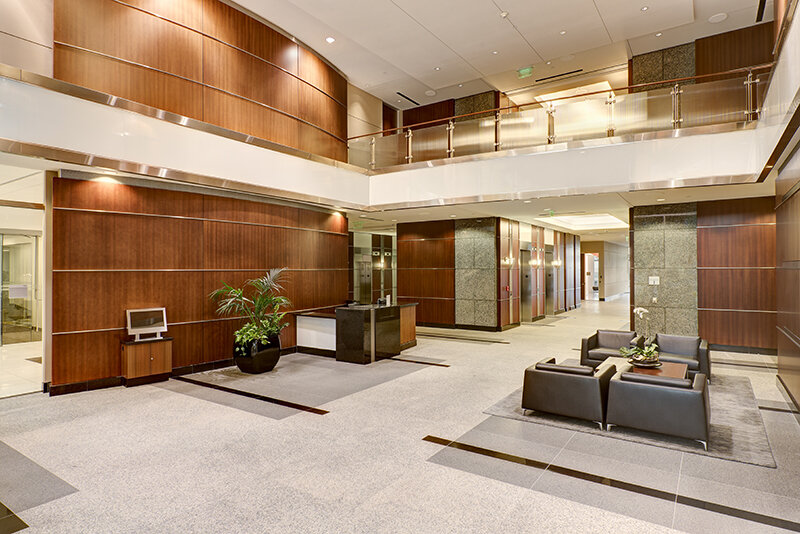A Quick Guide to Common Area Maintenance (CAM) Charges
What are Common Area Maintenance (CAM) Charges?
Common Area Maintenance (CAM) charges are ubiquitous with commercial property. The common areas of a shopping center, office building, and other multi-tenant properties are maintained through CAM expenses. Some examples of these common areas include lobbies, hallways, elevators, public bathrooms, and public security. These common areas deteriorate due to frequent use and age, so their upkeep is essential to the tenants that occupy the space as well as the customers who frequent these properties. It is common for CAM charges to be settled by the landlord and passed on to the tenant.
There is often a disconnect between the landlords and tenants as what should be included in the CAM section of a lease. Landlords often consider CAM as any and all expenses required to maintain, operate, repair, and manage the property. Tenants view CAM charges with a more holistic and focused view, considering the upkeep of hallways, parking lots, restrooms, and building security.
An office lobby like this is an example of a common area. The cleanliness, furniture, and amenities are factored in to CAM charges.
Common CAM Charges
CAM charges change depending on the asset class (office, industrial, retail, etc.), type of lease (gross, modified gross, or net), and more. Some typical expenses that a landlord can incur and consider a CAM charge to bill the tenant include:
- Maintenance and Repair of Parking Lots
- Trash Removal
- Landscaping
- Janitorial Services
- Pest Control
- Building Security
- Property Insurance
- Real Estate Taxes
- Building Signage
- Common Area Utilities
- HVAC (Heating, Ventilation and Air Conditioning)
- Administrative Fees
- Elevators
- Irrigation Systems
- Window Washing
- Loading Docks,
- Delivery Areas
- Sidewalks
- Driveway
- Renovations
CAM charges are extremely dependent on the landlord, so it is important to inquire on the exact expenses that are to be incurred with the lease.
The benches, plants, and fountains found in this shopping center are all factored in to the tenant’s CAM charges.
Calculating CAM Charges & CAM Complexities
CAM charges are proportional to the amount of space leased by each tenant. To do a quick calculation on CAM charges, a tenant can take their percentage of CAM charges or their pro-rata share and divide their square footage occupied by the gross leasable area (GLA) of the building. This figure will be considered into the tenant’s monthly operating expense so it can be paid during the year.
The landlord will often reconcile the actual CAM charges with the forecasted CAM charges and provide the tenant with a statement. This statement will allow a tenant to view whether they have overpaid or underpaid on their CAM charges. Depending on the scenario, the landlord will either disperse a credit if overpaid or request additional payment in the event of underpayment.
CAM Charges are divided into either: uncontrollable or controllable and cumulatively capped or non-cumulatively capped. Uncontrollable charges would be taxes, utilities, and insurance. Controllable charges would be the remaining items on the list mentioned earlier. Cumulatively capped CAM charges would be where the landlord and tenant agree to an annual percentage of CAM charges, also allowing the landlord to recover a change in CAM charge percent the next year in the event of a delta between the agreed percentage and a CAM charge increase. Non-cumulatively capped (preferred by tenants) is similar to cumulative but is different as landlord is unable to recover the delta on CAM cost increases the following year.
The lots and general area of these loading docks are considered in CAM charges for industrial buildings. If the pavement is damaged, that could affect productivity for all tenants in the space.
Common Lease Structures and their CAM Charges
The most common lease structures would be Gross, Modified Gross, and Net. When considering CAM charges, each lease has different characteristics in regard to considering CAM charges.
Gross: In gross leases, the owner of the asset is responsible for the building’s expenses associated with operation (this includes insurance, taxes, and maintenance). To adjust for these costs, the owner will often factor these charges into the monthly rent to be paid by the tenants.
Modified Gross: The tenant is responsible for some of the operating expenses of the property (negotiable – see above for a list of what could be charged), as well as their normal rent amount
Net: There are various types of net leases (Single, Double, Triple, Absolute), but for the purpose of simplicity, we will be considering a triple net (NNN) lease. With triple net property, the tenant is responsible for all of the operating expenses, taxes, insurance, maintenance, repair, and upkeep of the building as well as their agreed monthly rent.
Recap: CAM Charges
Common area maintenance charges are varying expenses that are up for negotiation. What is considered a common area cost varies depending on the property owner. CAM charges vary by landlord and it is important if one is a tenant to really understand what is included in their CAM charges. It is imperative that one understands a space’s CAM charges prior to the execution of a lease.


